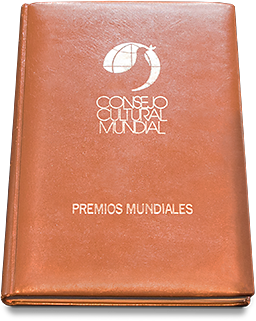
 Albert Einstein World Award of Science 1989
Albert Einstein World Award of Science 1989
Field of Research: Biochemistry
Date: 08 November 1989
Place of Ceremony: Edgerton Lecture Hall
Host Institution: Massachusetts Institute of Technology
Host Country: Cambridge, Massachusetts, USA
Cambridge, Massachusetts, USA, November 1989. The World Cultural Council presented the 1989 Albert Einstein World Award of Science to Dr. Martin D. Kamen, Professor Emeritus of the University of Southern California. The Official Awarding Ceremony took place at the Massachusetts Institute of Technology, which acted as host for the event this year.
Among the many pioneering contributions to biochemistry of the 1989 recipient, Dr. Kamen, the best known is his 1940 discovery, in collaboration with S. Ruben at the Radiation Laboratory of the University of California at Berkeley, of the long-lived radioactive carbon isotope 14C. The availability of this isotope, and its use in tracer the methodology, was one of the most important single factors in the development of the field of molecular biology. Some of his other research concerned assignment of mass to long-lived sulphr isotope, nitrogen fixation in photo-synthetic bacteria and cytochrome proteins in anaerobes and in photosynthesis apparatus.
Dr. Kamen was born in Toronto, Canada, in 1913, the only son of Russian immigrants, and came to the United States with his parents as a child. He received his BS in 1933 and PhD in 1936 from the University of Chicago. He was a research associate at the University of California Radiation Laboratory until 1944 and subsequently held professorial appointments at several universities. He is professor emeritus both at the University of Southern California at Berkeley and the University of California at San Diego, and has held numerous administrative posts at each.
He has received many awards and honors, among them the C.F. Kettering Award for Excellence in Photosynthesis and the American Chemical Society Award for Nuclear Applications to Chemistry, and four honorary degrees. He was elected to the National Academy of Sciences in 1962.
His books include a standard text on tracer methods, Isotopic Tracers in Biology (1947), which was highly influential in the introduction of tracer methodology to biochemistry. He also wrote Primary Processes in Photosynthesis (1963) and a Tracer Experiment (1964), as well authoring or co-authoring more than 250 scientific publications.


